Transport & Glider Clasp, in Gold (with "200" pendant)
CATEGORY: Version
SKU: 01.GTR.0717.501.01.002
Estimated market value:
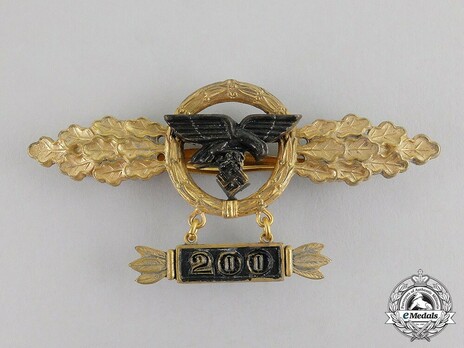
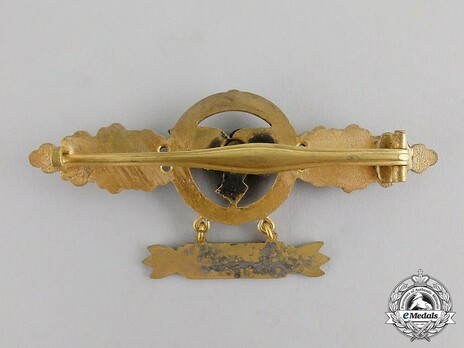
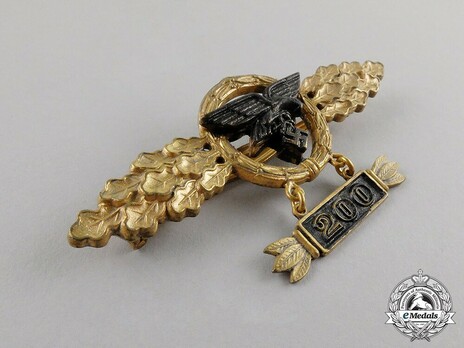
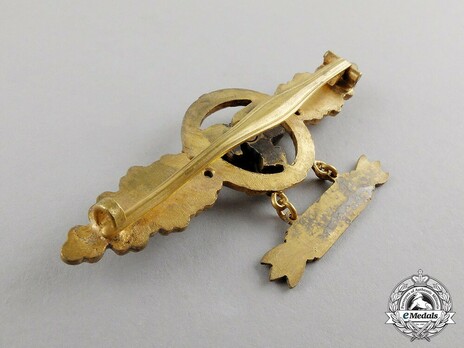
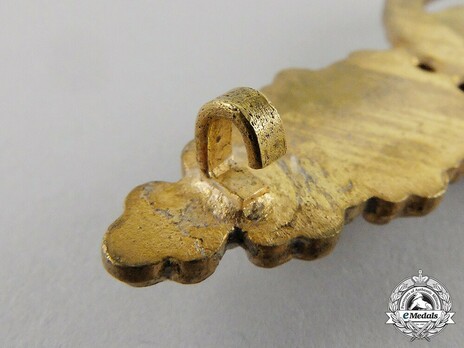
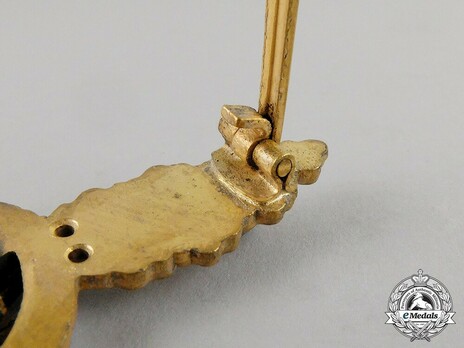
Estimated market value:
A textbook example of a gold grade Luftwaffe Squadron Clasp for Transport Pilots “Transport und Luftlandflieger”; in gilt zink; the obverse with a central laurel wreath with a Luftwaffe eagle clutching a swastika in the centre, with nine oak leaves on either side of the wreath; with a clasp suspension featuring the numeral “200”; horizontal slender banjo style pinback, a sheet metal hinge, and a flat wire catch; measuring 77.35 mm (w) x 25.62 mm (h); weighing 20.1 grams; with the gilt on the clasp nearly fully preserved; in virtually mint condition.
The first Flight Clasps were introduced on January 30, 1941 by the Commander-in-Chief of the Luftwaffe, Hermann Göring. Every airman flying missions, no matter their role, was eligible to obtain them. The Bronze grade clasp was awarded for participation in 20 combat missions, the Silver grade clasp for 60 missions, and the Gold grade clasp for 110 missions.
The clasps were either die-struck or die-cast. Early specimens were made of tombac, an alloy with a high copper content. As the war progressed, copper, which had to be imported to Germany, wasn’t as readily available anymore, which led to production being switched over to using zinc. Zinc was of lower quality, but cheap and abundant.
Cloth versions of clasps exist, but they are extremely rare.
In June of 1942 a pendant with a star was added to the Gold grade clasp as an additional grade to honour those airmen that achieved a very high number of missions flown. Depending on the type of clasp, the number needed for achieving this varied. On April 29, 1944 new pendants were introduced. The star was replaced by a number plaque. The number displayed started at 200 and rose in increments of 100 up to 2000. These later pendants are always made of zinc and are of lower quality than the clasps.
Only two clasps are known to have ever been awarded as a special version with diamonds, one Short-Range Day Fighter Clasp and one Air-to-Ground Support Clasp.
The Flight Clasps were designed by Professor Sigmund von Weech.
The Transport & Glider Clasp was introduced on November 19, 1941. The star pendant was awarded for 500 missions. The clasp shows a hovering eagle clutching a swastika.

Comments
Sign in to comment and reply.


Scroll Top